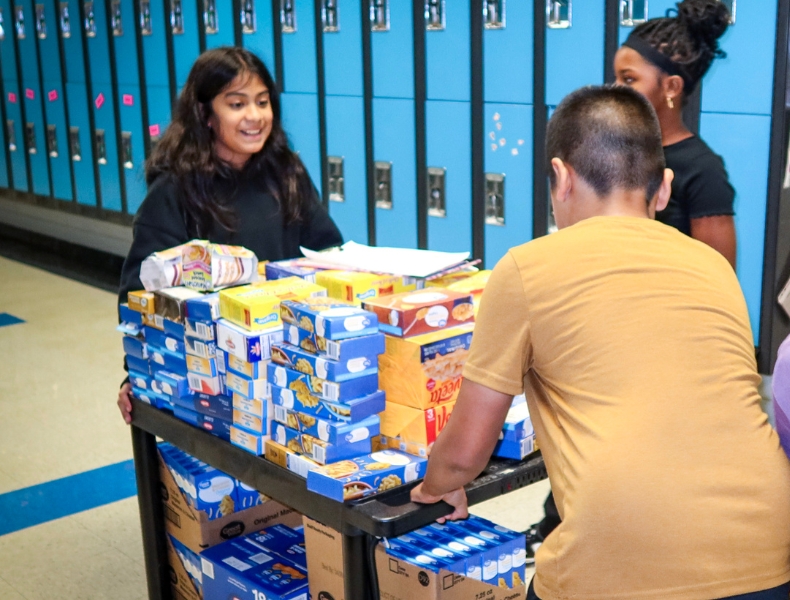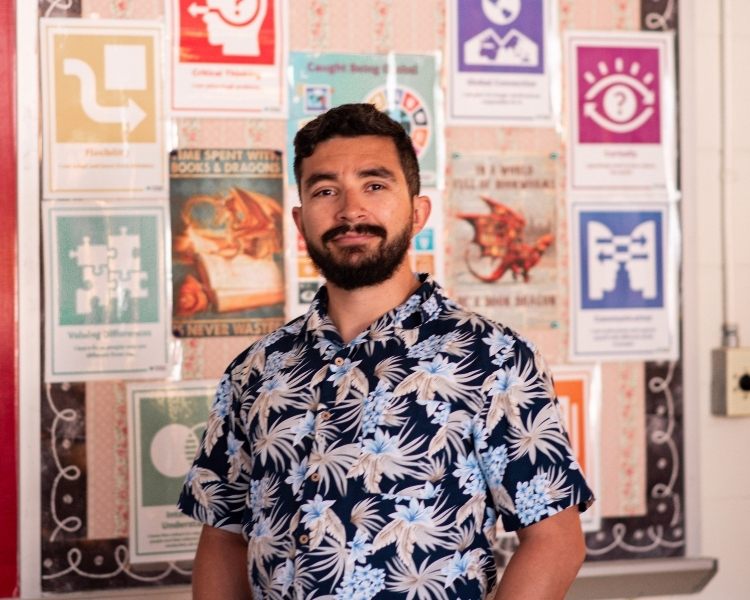The global pandemic may have disrupted our lives, but it has also shed light on our interconnectedness and the urgent need for collaboration in solving global issues. Now, more than ever, it is clear that we must work together to tackle challenges that affect us all. Through Participate Learning’s Global Leaders framework and meaningful project-based learning (PBL) experiences, we can cultivate a sense of agency and empower students to take action to address current and future challenges.
PBL and Global: A Recipe for Student Engagement and Relevant Learning
Project-based learning (PBL) is a great approach for engaging students in problem-solving with a purpose while also addressing content standards across subject areas. And when you incorporate global competencies and action-driven learning through the Blueprint for a Better World, you set the foundation for powerful learning experiences that motivate students to use critical thinking skills, grapple with authentic and challenging problems, develop social-emotional skills, and use their voices to take action in their communities and beyond.
Since project-based learning can seem abstract, let’s take a look at how third-grade teacher Katie Gourlay used global learning as a framework for PBL in her classroom. By doing so, she was able to create relevant and authentic learning experiences to engage students, give them a strong sense of agency, and instill confidence in their ability to solve global challenges.
Beginning with the End in Mind
To create a solid global PBL project, Katie knew she needed to do two things:
- Begin with the standards—in this case, third-grade math and literacy standards around measurement and persuasive writing.
- Create a context for learning that would be meaningful and empowering to students.
Let’s take a look at how Katie used the different stages of inquiry to plot out her project, which centered on how community and industry affected water quality in Crabtree Creek, near their school in Raleigh, North Carolina.
Element 1: Ask a Challenging Question with a Local and Global Context
Katie launched this project by posing a challenging question to her students: How do we protect water sources in our community?
Katie didn’t ask her third-graders to solve the issue of access to clean water, but she did invite them to start paying attention to the impact of people and industry on the creek and wildlife near their school. Determining the right question is in the Goldilocks zone of learning—not too difficult, not too simplistic, but with just the right amount of complexity to support sustained inquiry for students.
With that question in mind, three global challenges came into focus: Preserve Water Ecosystems, Protect Land Ecosystems, and Support Sustainability. By attaching these themes to her project, Katie added a sense of urgency and purpose to the question she was asking, inviting her students to see themselves as part of a larger effort that impacts communities worldwide.
Element 2: Global PBL and Sustained Inquiry
According to the Buck Institute of Education, sustained inquiry is a process in which “students engage in a rigorous, extended process of posing questions, finding resources, and applying information.”
Katie speaks to how an action project designed around a global issue can provide the foundation for sustained inquiry, saying that real-world challenges provide multiple angles for exploration. As you can see from the collaborative project Katie’s students did alongside students in a Malawian classroom, one question led to another, resulting in a complex, multifaceted research experience.
First, Katie’s students researched land use around their local creek to understand how the community and nearby industries used water. Next, they tested the water quality to learn about the impact of those factors on the creek.
After sharing and comparing their results with their Malawian peers, students designed water filters to reduce the negative impacts of pollution on wildlife and their local water source.
One way Katie helped her students extend their inquiry was by introducing a guest speaker who provided a different perspective on how people plant various crops around the world. Mr. Dickson, a subsistence farmer in Malawi, gave students a fresh opportunity to ask questions and apply their learning about plants, soil, and farming in new ways. By experiencing a virtual field trip to his farm, students made connections between food sources in their community and across the world.
Element 3: Global PBL and Authenticity
One thing that makes global project-based learning an effective way to engage students is that it is authentic. This authenticity helps students identify connections between local and global issues, motivating them to find answers to meaningful questions.
By connecting with Malawian students, Katie’s class learned that access to clean water is necessary regardless of where you live. Together, they worked to design solutions—water filters—to address the issue. They used their voices to share their knowledge and change perceptions and behaviors around water use in their own community.
Element 4: Student Voice and Choice within Global PBL
As with any well-designed PBL experience, Katie developed hers with student voice and choice in mind. How would her students use their learning to make a difference and take action in their community? Through their individual and collaborative efforts, they addressed the global challenge of supporting sustainability.
Element 5: Provide Opportunities for Project Reflection
Katie wove opportunities for reflection throughout her project, providing space for her students to make meaningful connections, ask thoughtful questions, and determine next steps.
Her students began their inquiry by wondering how to protect water in their community. Later, they shared their findings with their Malawian counterparts to discuss and reflect on what they learned. Finally, they used these moments of reflection to put their learning into action by designing water filters and educating the public.
Element 6: Incorporate New Learning Through Critique and Revision
Katie’s project invited students to engage in critique and revision organically.
- How did their understanding of how communities use and protect water change after talking with their Malawian peers?
- How did they apply reflection, observation, and trial and error to improve their water filter designs?
Students applied critical thinking and flexibility throughout the project, making adjustments as they learned more.
Element 7: Produce a Public Product
With the creation of their public service announcements, Katie’s students connected their classroom learning directly to their community. The fact that they were able to share their knowledge and inspire action is a powerful example of authentic, action-driven learning.
Remember: You Don’t Need All the Answers to Get Started
If Katie’s project has inspired you to try your hand at global project-based learning, chances are good that you have questions and perhaps also trepidation.
This is normal.
You don’t need a fully mapped-out project before you begin—in fact, you shouldn’t. Allow students to drive the inquiry, make real-world connections, and learn through action.
Global PBL takes practice, but by integrating these elements, you can design meaningful, engaging projects that prepare students for career readiness, leadership, and collaboration in a globally connected world.
Are you ready to take the leap and create global, project-based learning experiences for your students? Learn more about how we partner with schools to develop personalized plans to infuse global learning into their curriculum. Connect with Participate Learning on Twitter to see more examples of global learning in action.




